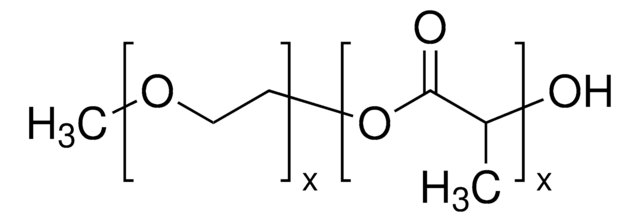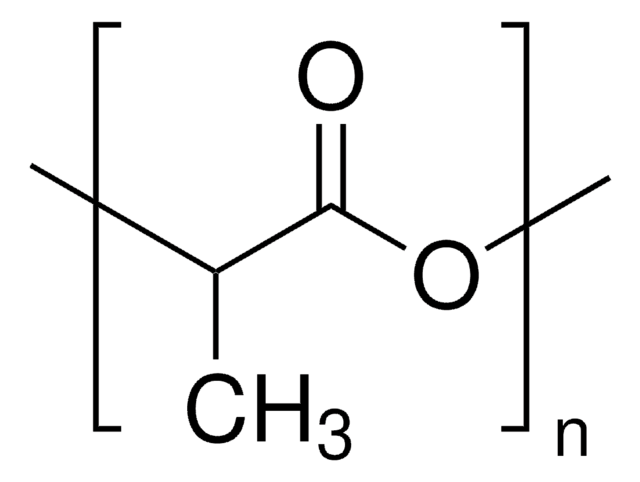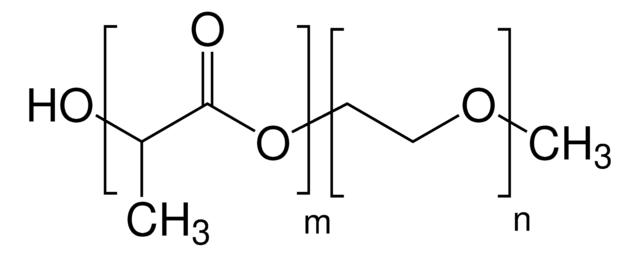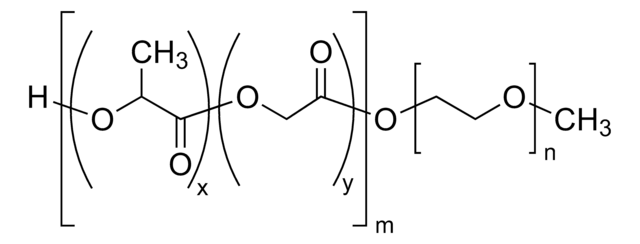659630
Polylactide-block-poly(ethylene glycol)-block-polylactide
PLA average Mn 1,500, PEG average Mn 900
Synonym(s):
PLA-PEG-PLA
About This Item
Recommended Products
form
solid
Quality Level
mol wt
PEG average Mn 900
PLA average Mn 1,500
average Mn (1,500-900-1,500)
degradation timeframe
<12 months
transition temp
Tm 278.5 °C
Tg 7-9 °C
PDI
<1.2
Looking for similar products? Visit Product Comparison Guide
Related Categories
Application
Features and Benefits
Storage Class Code
11 - Combustible Solids
WGK
WGK 3
Flash Point(F)
Not applicable
Flash Point(C)
Not applicable
Personal Protective Equipment
Choose from one of the most recent versions:
Already Own This Product?
Find documentation for the products that you have recently purchased in the Document Library.
Articles
Interest in utilizing biodegradable polymers for biomedical applications has grown since the 1960s.
AliAliphatic polyesters, including polylactide and polyglycolide, are biodegradable polymers widely used in medical applications.
Immunosuppressive tumor-associated myeloid cells (TAMC) are responsible for glioblastoma (GBM) resistance to immunotherapies and existing standard of care treatments. This mini-review highlights recent progress in implementing nanotechnology in advancing TAMC-targeted therapies for GBM.
Humankind has utilized protein materials throughout its existence, starting with the use of materials such as wool and silk for warmth and protection from the elements and continuing with the use of recombinant DNA techniques to synthesize proteins with unique and useful properties.
Our team of scientists has experience in all areas of research including Life Science, Material Science, Chemical Synthesis, Chromatography, Analytical and many others.
Contact Technical Service







